Fat tire e-bikes markets are highly competitive as more people become aware of their versatility and convenience of these vehicles. Manufacturers are continuously innovating to create more efficient and powerful bikes with better features. With the increased stability and higher quality of ebikes comes the confidence to explore more, making the overall experience more enjoyable. But one question is: Are fat tires really helpful in preventing blowouts?
Fat tire
Due to the additional weight of the motor battery and other parts, ebike tires will be under more pressure compared to traditional bicycles. To accommodate this, E-bike fat tires are significantly different from normal narrow tires.

Tread
A thicker outer tread and more complicated tread pattern distinguish fat tires. This increases vehicle grip and resistance to ground impediments. The thicker tread improves puncture resistance at faster speeds and may be used on more challenging terrain.
Harder material
Fat tires are also made of a different material than regular tires and are generally stiffer. They will endure greater friction and heat generated during daily driving, making them more competitive than regular tires.
Wear resistance
The rubber composition of a fat tire is abrasion resistant. This allows the fat tire ebike to travel long distances without effort while carrying more weight and providing better traction.
Advantages of Fat tire E-bikes
E-bikes with fat tires offer increased comfort and stability, which is why they have a competitive edge.
-
Provide a more stable riding experience
The ease of use of an e-bike has made it one of the most popular modes of public transit. The benefit of using it as a personal mobility device is that it enables a steadier ride and this is helpful for most riders, especially novice riders and riders with limited mobility.
Ebikes with fat tires often have a wider contact area, which boosts grip and traction. This will be evident on slippery roads, and a wide tire e-bike ride will be more stable than on a narrow tire e-bike. Cyrusher e-bikes, for example, use puncture-resistant fat tires with concave and convex tread grooves to maximize traction on the ground, lower the chance of sliding and improve safety when driving in the rain.
-
Better durability
Another obvious benefit of fat-tire e-bikes is their increased durability. Fat tires are thicker than narrow city tires, offering enhanced wear resistance. The result is money saved on maintenance by reducing the need for tread maintenance during long-term use.
-
Improved cushioning ability
It's easy to find riders who agree that fat tire e-bikes provide a more comfortable riding experience. Aside from the damping system, two factors impact comfort: tire pressure, on the one hand, and tire width on the other. On various surfaces, adjusting the tire pressure might result in a completely different riding effect. Lowering fat tire pressure will usually mean a smoother driving experience. Secondly, fat tires absorb more road vibrations and shocks than thin tires, making your ride smoother.
-
Overcome more road challenges
Tire pressure is a critical factor in a vehicle's ability to overcome various road surfaces. Keep in mind that different tire manufacturers will provide different reference values for tire pressure. Ensure that you do not exceed the highest tire pressure or upper limit to prevent blowouts. Fat tire e-bikes can perform well on sand, mud, mountains, roads and a variety of other surfaces as well due to their excellent grip. Lowering the tire pressure in soft sand and increasing it in bumpy mountainous terrain is generally recommended, but this will depend on the specific riding circumstance.

How does a flat tire function?
Due to the fast speed and heavy weight of electric bicycles, the wear and tear on the tire tread is more serious, so the chances of a flat tire are increased. tires are generally composed of the tread and the inner tube. Inner tubes are hidden inside the tire and are responsible for maintaining air pressure. There may be a break in the tread or the inner tube when a blowout occurs.
The heavier weight of electric bicycles puts more pressure on the tire's rubber. This means that it’s more likely to develop wear and tear which can cause a puncture in the inner tube, leading to a flat tire. Additionally, electric bicycles tend to travel at higher speeds than regular bicycles. The high speed and the friction heat on the ground surface can also contribute to the wear and tear of the tire tread.
Can fat tires reduce flat tires?
Fat tires have a larger ground contact area, improving traction. This increased grip on the ground gives more stability and control to the rider when cornering, accelerating and braking.
Narrow tires are not popular for ebikes. Narrow tires may offer better speed, but the lack of grip makes them a poor choice for ebikes as they cannot offer the same level of stability and control. The wider contact area of a wide tire also provides increased traction, enabling you to navigate uneven terrain more easily. Furthermore, the extra width of a wide tire can help absorb shocks from potholes and other obstacles, resulting in a more comfortable ride. This makes them an ideal choice for off-road riding. In addition, with fat tires rider weight is more evenly distributed on the road. This makes the bike more stable and reduces the risk of slipping or skidding while turning, accelerating or braking.
Wider tires, in comparison to thinner ones, distribute the weight of the bike and rider more evenly and reduce pressure at any one point. Therefore, selecting high-quality fat tires can lower the electric bike tire blowout risk.

Tips to avoid flat tire
Even with the proper tires, you cannot totally eliminate the possibility of a blowout. Additionally, proper maintenance is required to lower the chance of flat tires and make riding safer.
Low tire pressure is one of the most common reasons for a flat tire. Unsuitable tire pressure reduces riding efficiency, increases power consumption and triggers a host of problems. Many riders prefer to lower tire pressure for a more pleasant and smooth riding experience. On the other hand, low-pressure tires will allow for more ground contact, causing the vehicle to compress against the wheel throughout the ride. This can result in tearing and air leakage. However, attention must be taken not to over pressurize since this can also raise the chance of a blowout. As a result, when determining tire pressure, always refer to the manufacturer's recommended range and adjust as necessary for different riding circumstances.
For example, the tire pressure range for Cyrusher e-bikes is roughly 5psi-20psi (no more than 20psi is recommended) depending on the model parameters. In addition, tire pressure can be affected by external factors such as weight and temperature. You can take test rides on different roads to determine the best tire pressure parameters for you.
2. Check the tread frequently
After a long period of pedaling, tire tread will continue to deteriorate and wear, becoming thinner and raising the possibility of a blowout. It is crucial to examine and replace the tire right away if a leak is found while cycling.
-
Fill with blast-resistant tire material
As soon as a small break in the tread occurs, you can fill the tube with sealant to form a seal. The sealant is designed to quickly form a strong bond with the inner surface of the tire, creating an airtight seal. This prevents further loss of air pressure from the tire and helps keep it from going flat. Once the sealant is applied, checking the tire pressure regularly is important to ensure it is holding. If the tire pressure drops, additional sealant may be needed to keep the tire inflated. The sealant will also help to protect the tire from further damage, and it can be used as a temporary solution until the tire can be replaced. It is important to note that the sealant should not be used as a permanent solution. Remember, it is also critical to check the tire treads regularly for any further damage that may need to be repaired.
-
Drive carefully
When riding on the road, you should always be aware of your surroundings and keep an eye out for potential obstacles. By scanning the road ahead and looking for any potential hazards or obstacles, you can be prepared to take evasive action such as swerving or slowing down to avoid them. This can significantly reduce the chances of getting a flat tire due to an unexpected obstacle. Additionally, it's wise to ride your bike in designated bike lanes, when possible, as this will help to reduce the chances of hitting any unforeseen obstacles.

Conclusion
In summary, fat tires with a wide contact area with the ground can enhance riding stability and comfort and reduce the chance of a flat tire. The increased contact area of fat tires provides more traction and grip on the ground, allowing for a more secure and comfortable ride. The wider surface area also helps to distribute the weight of the rider and bike more evenly, which helps to reduce the chances of a flat tire by reducing the overall pressure placed on the tires.
However, to better assure tire safety for electric bicycles, it is not enough to merely choose high-quality tires; specific maintenance guidelines must also be followed. Still, the tread will eventually deteriorate with time, so it needs to be replaced as necessary.

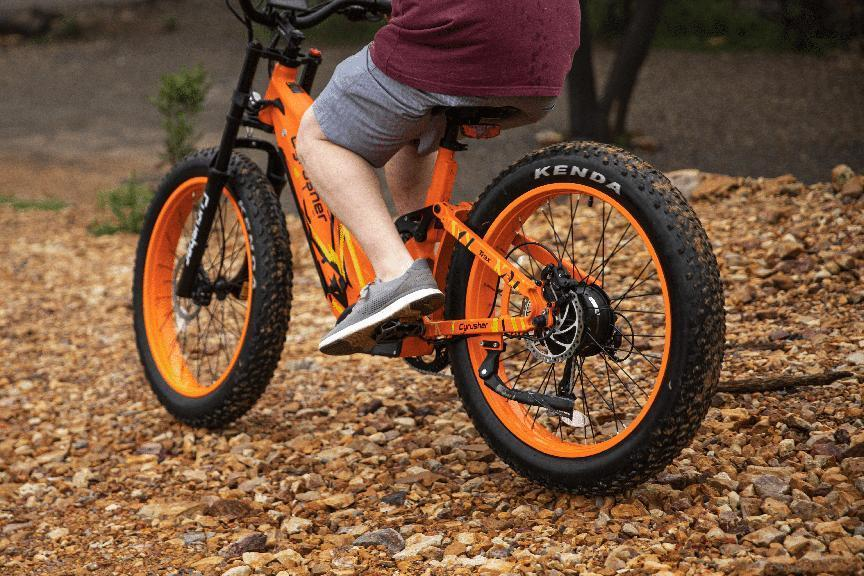


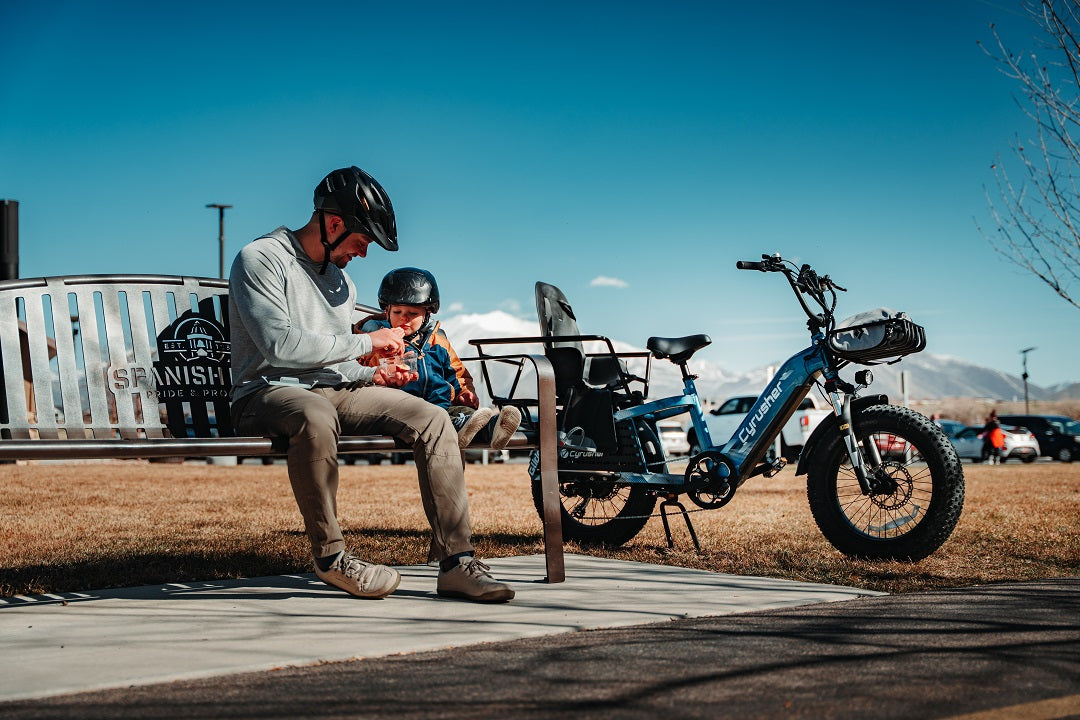
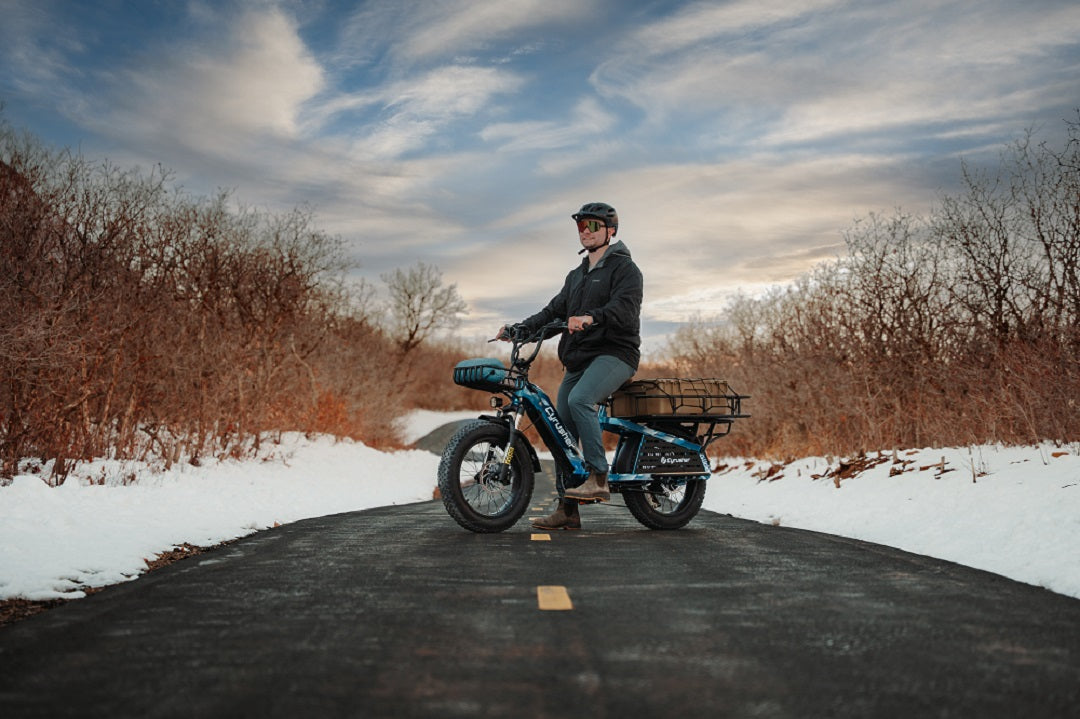
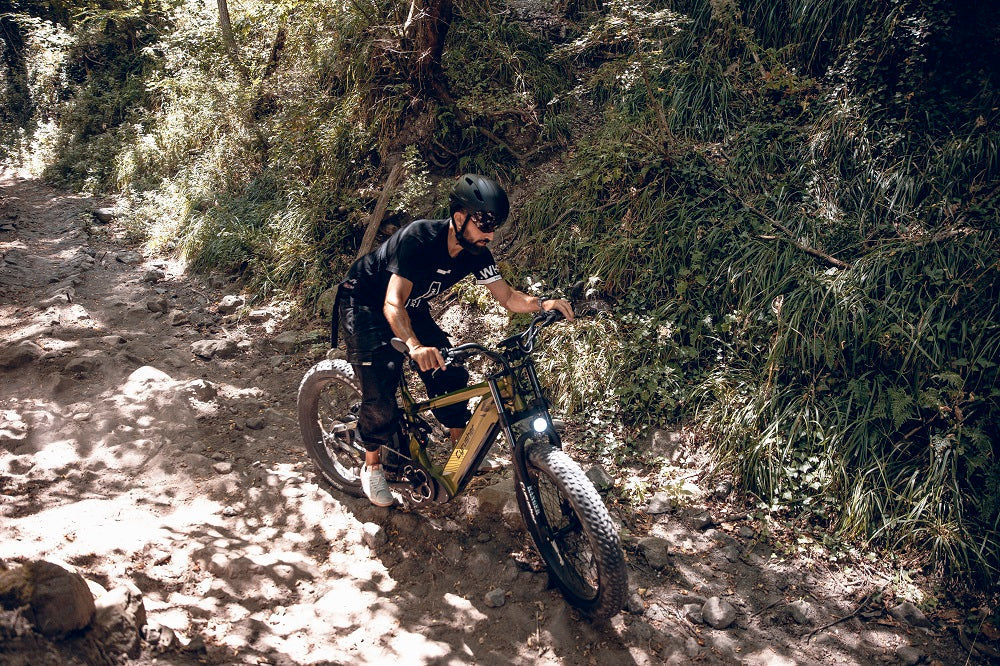
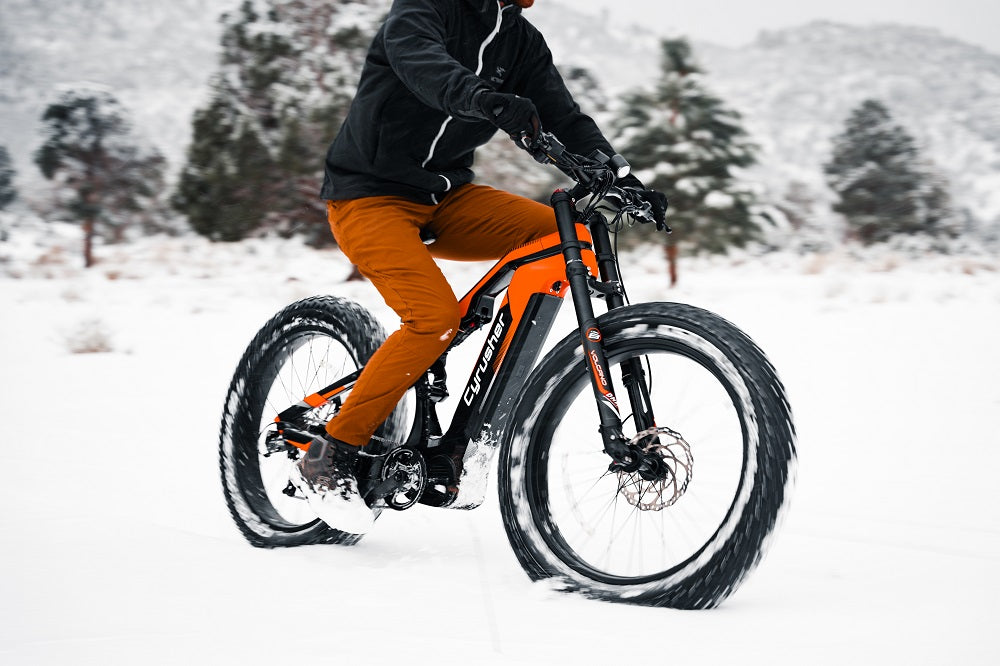
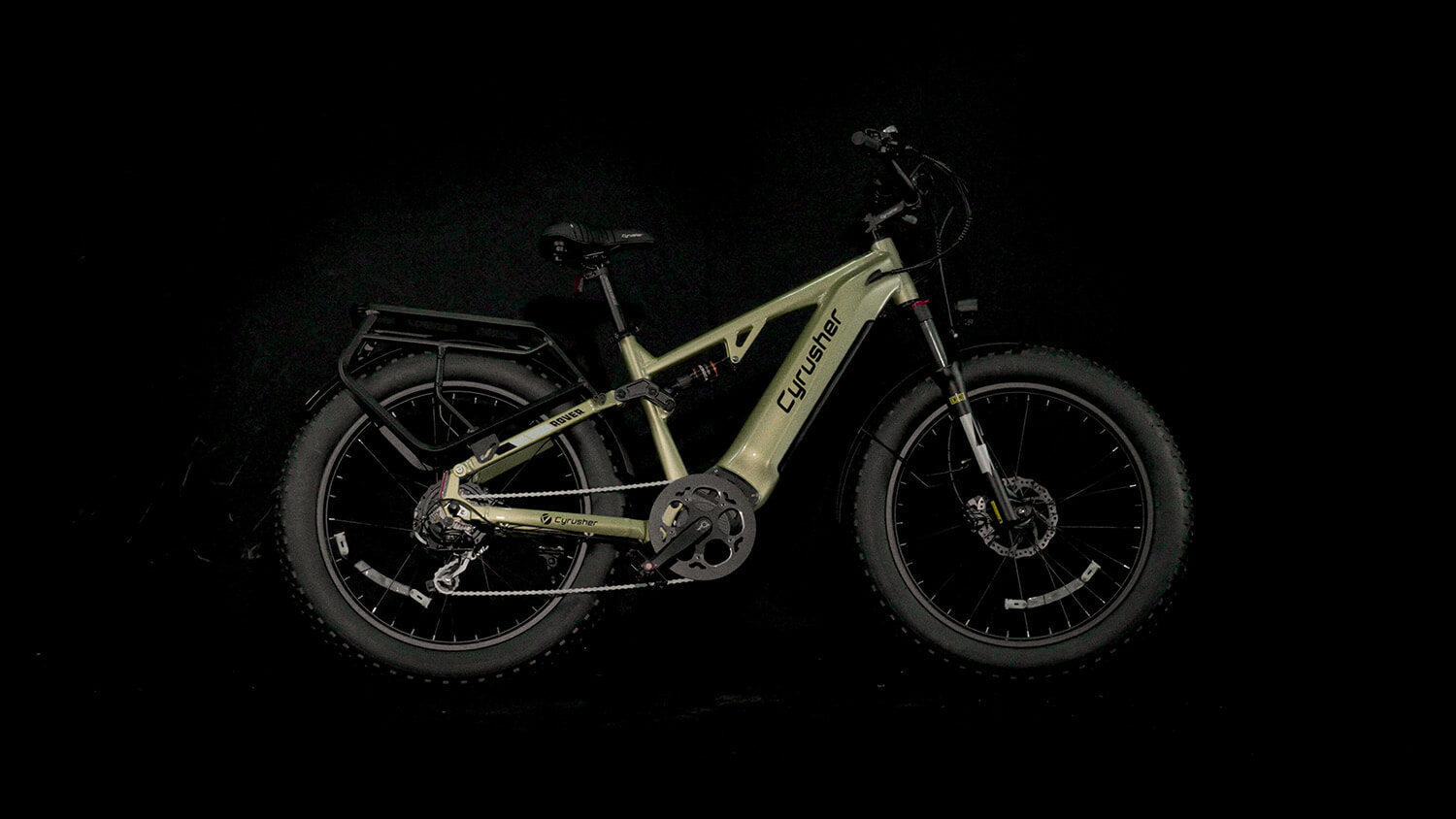

Share:
Which is Better:Mid-drive Motor Vs Rear Hub Motor?
Cyrusher Rider Story - Peltier Rodolphe's New Cycling Chapter on Cyrusher Step-through Kommoda